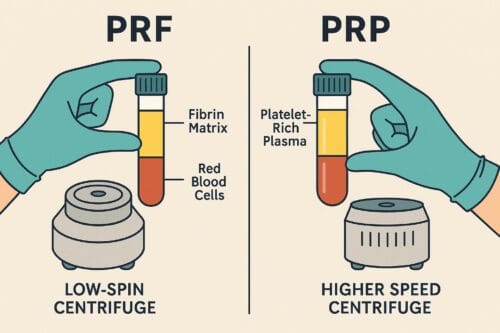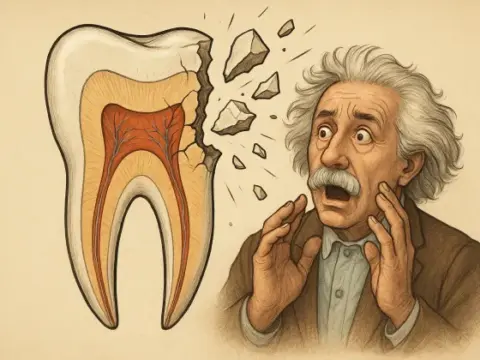Empower Your Beauty Journey with PRF and PRP
PRF (Platelet Rich Fibrin) and PRP (Platelet Rich Plasma) are popular options for skin and hair treatments. Both treatments encourage natural healing with platelets obtained from the patient’s own blood. However, PRF may be more long-lasting and effective, while PRP offers faster results. In this article, we will discuss the differences between PRF and PRP, comparing their advantages and disadvantages.


PRF (Platelet Rich Fibrin) and PRP (Platelet Rich Plasma) are two cutting-edge technologies that have revolutionized the beauty and health industry. Both treatments encourage natural healing with platelets derived from the patient’s own blood and are used in many areas. However, to decide which one is best for you, we will take a deep dive into the key differences between PRF and PRP in this article.
What is PRF and PRP and How is it Used?
PRF is a newer type of biomaterial with a fibrin structure that contains growth factors from platelets. PRP uses platelet-rich plasma to regenerate skin, hair and other tissues. While both methods offer a natural healing process, *PRF* has the potential to provide more permanent results with its fibrin structure.
For Which Situations Is It Suitable?
While PRF is generally preferred for conditions such as wound healing, skin regeneration and hair loss, *PRP* is more commonly used in aesthetic procedures because it provides rapid results. While PRF may be more suitable for those with chronic skin problems, the rapid effect of PRP is ideal for those who want primary aesthetic results.
| Treatment Area | PRP | PRF | Explanation / Suggestion |
|---|---|---|---|
| Hair Loss Treatment | ✅ | ✅ | PRP provides a rapid effect at the beginning, PRF offers a longer lasting effect. |
| Skin Rejuvenation and Radiance | ✅ | ✅ | Since PRF has a more concentrated content, its effect may be more permanent. |
| Under Eye Dark Circles and Bags | ✅ | ✅ | PRF may be more effective because it also provides fullness. |
| Acne Scar Treatment | ✅ | ✅ | PRF may be preferred because it contains more growth factors. |
| Gum and Bone Regeneration | ✅ | ✅ | PRF offers more widespread and successful results in dentistry. |
| Aesthetic Filling Alternative (Volume Effect) | ❌ | ✅ | PRF can be applied in gel form, creating a light filling effect. |
| Applications Requiring Long-Term Effects | ❌ | ✅ | PRF is effective for a long time because it provides slow release. |
| Sports Injuries | ✅ | ❌ | PRP is preferred for rapid healing, PRF is rarely used. |
| Orthopedic Treatments (joint, muscle, tendon) | ✅ | ❌ | PRP has been studied and used more in this area. |
| Facial Mesotherapy | ✅ | ✅ | Since PRP is in a more liquid form, it is easily applied by injection, PRF is supportive. |
Treatment Process
Both treatments are performed by injecting platelets obtained from the patient's own blood into specific areas. While PRF provides a longer-lasting effect by processing the cells in the blood more slowly, the effects of PRP are observed more quickly.
PRP (Platelet Rich Plasma)
Treatment Process
In PRP treatment, the blood taken from the patient is centrifuged in special tubes to separate the plasma portion. This platelet-rich plasma is injected into the scalp, face or other areas where needed.
- Application time: Approximately 30-45 minutes
- First effects: observed within 1-2 weeks
- Duration of permanence: 2-3 months
- Recommended session: 3-4 sessions (once a month)
PRF (Platelet Rich Fibrin)
Treatment Process
In PRF treatment, blood is still taken from the patient, but the centrifugation process is done at a lower speed and in a shorter time compared to PRP. In this way, natural clotting is preserved and growth factors have a longer effect.
- Application time: Approximately 30 minutes
- First effects: start within 2-3 weeks
- Durability: 4-6 months
- Recommended sessions: 2-3 sessions (every 4-6 weeks)
Advantages and Disadvantages
While PRF stands out with its longer-lasting effects, PRP stands out with its ability to provide faster results. Both procedures are generally side-effect free, but there may be slight redness or swelling after the application. At our AuraDent clinic, we offer our patients the most appropriate treatment plan.
PRP (Platelet Rich Plasma)
✅ Advantages:
- Since it is in a more liquid form, it can be easily administered by injection.
- It is used in many areas such as hair loss, facial rejuvenation, orthopedic injuries.
- Quick results can be seen after application.
- Since your own blood is used, the risk of allergy is low.
❌ Disadvantages:
- Its effect is short-lived and may subside within a few weeks.
- The number of applications is usually greater (done in courses).
- Anticoagulant is used during the centrifugation process (slightly reduced naturalness).
PRF (Platelet Rich Fibrin)
✅ Advantages:
- It is naturally structured and does not contain anticoagulants.
- It contains more growth factors and releases them slowly, so its effect lasts longer.
- It is effective in areas such as skin rejuvenation, under-eye treatments, and dentistry applications.
- It can create a light filling effect thanks to its gel-like consistency.
❌ Disadvantages:
- Because it is more concentrated, it is more difficult to administer by injection.
- It needs to be prepared precisely and administered in a short time (before it clots).
- Not every clinic may have a system suitable for PRF application.
Conclusion
PRF and PRP each offer unique benefits and are ideal solutions to personalize your beauty experience. The lasting effect of PRF combined with the rapid results of PRP can achieve an optimal healing and regeneration process. You can receive a professional consultation at our clinic to decide which method is best for you.


